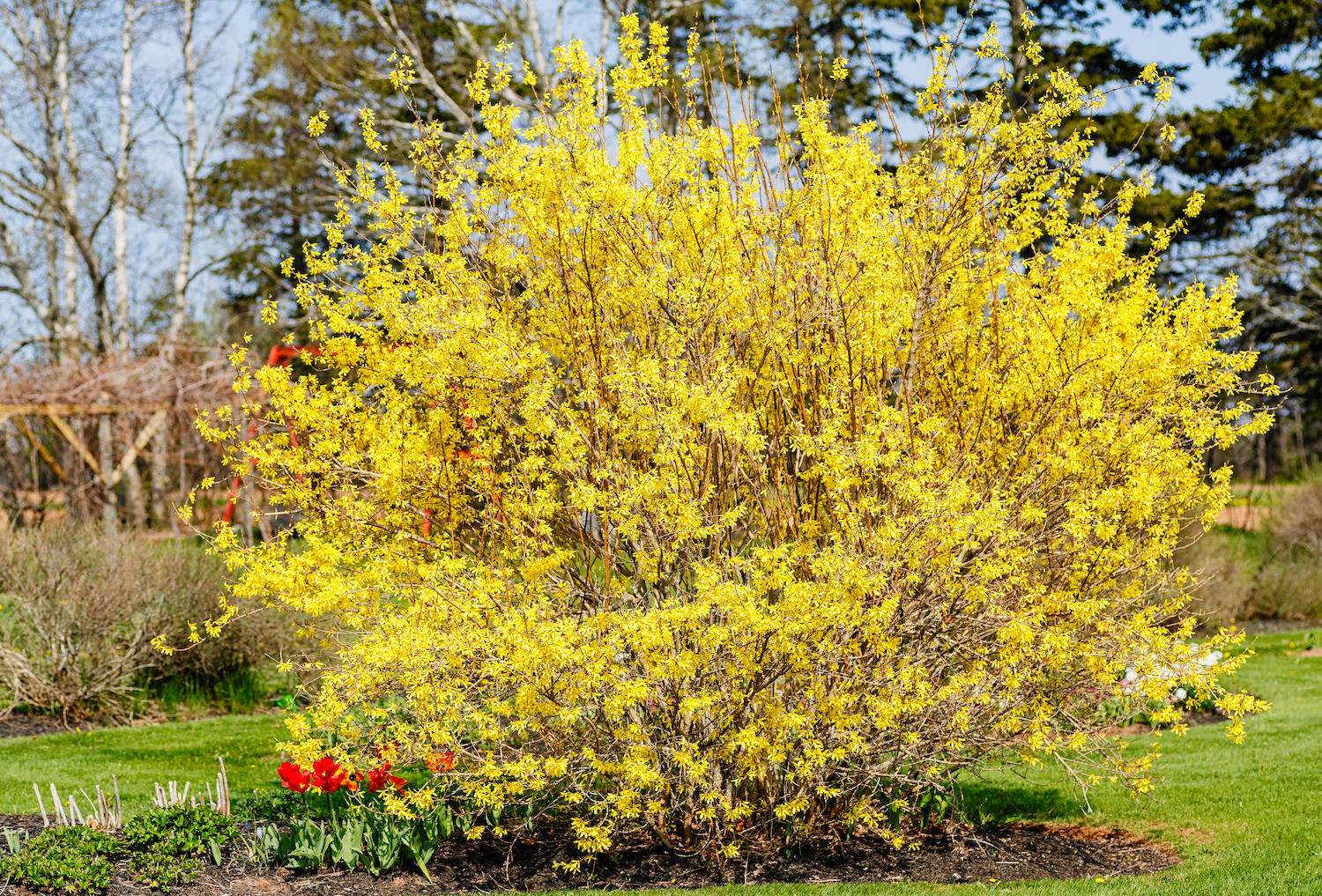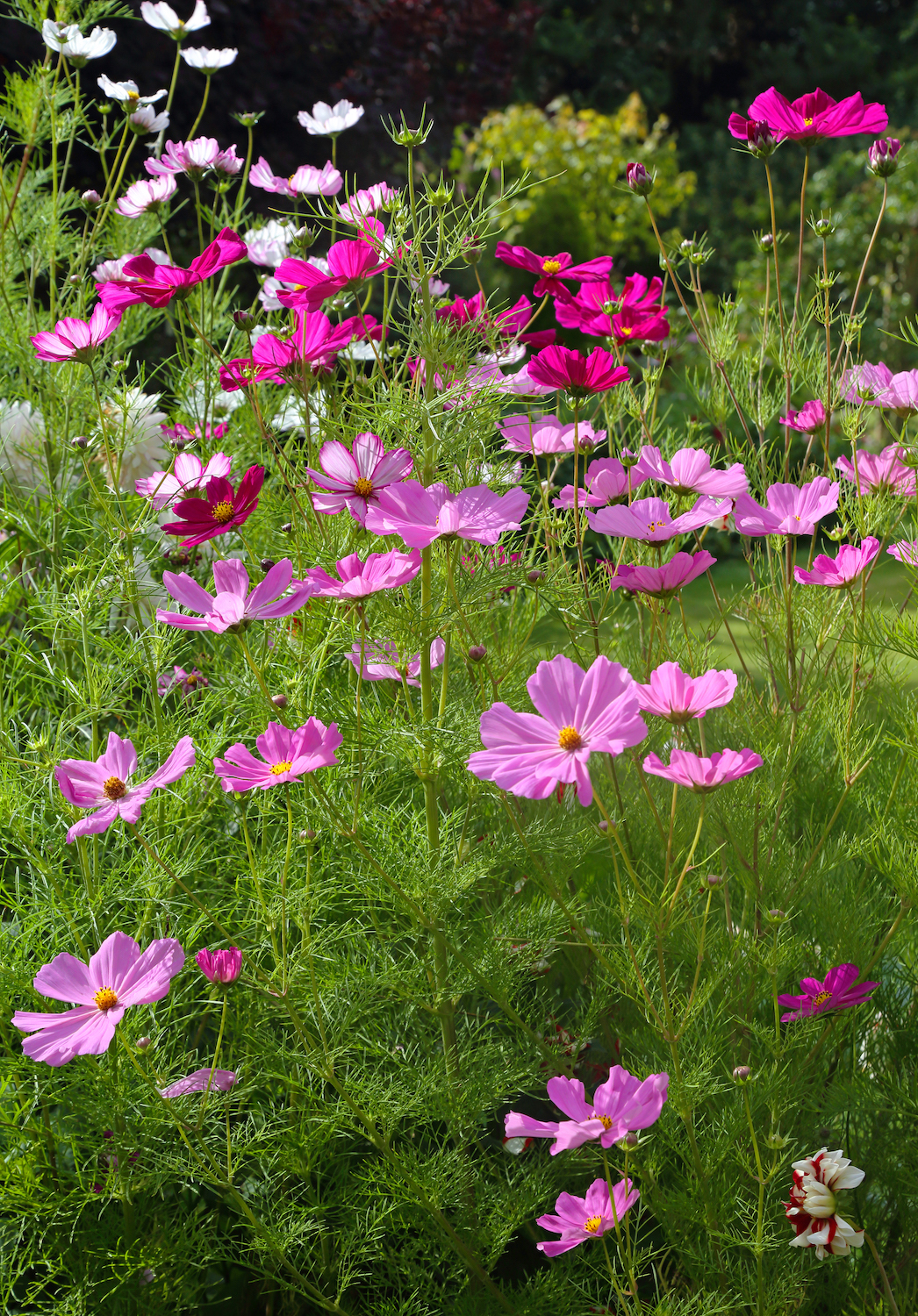8 Things to Prune in your Garden in June — What Pro Gardeners Say to Trim for a Blooming Backyard
From trees and hedges to shrubs, flowers and vines-the species to snip according to gardening experts

With the mix of late spring showers and early summer sun, it's likely your garden has burst forth with new growth and fresh blooms. After the first flourish, knowing what things to prune in your garden in June will ensure plants, shrubs and trees remain healthy throughout the summer and into the next growing season.
Trimming back dead branches, straggly twigs, expired flowerheads and dried leaves, allows plants, shrubs and trees to put energy into new growth instead of old. 'In June, pruning tasks in the yard typically focus on promoting healthy growth, maintaining shape, and removing any dead or diseased branches,' says Phil Catron, president and founder of NaturaLawn® of America.
So, time to take up your pruning tools and get busy in your yard for the month.
1. Cedar, privet, boxwood and other evergreen hedges

Evergreen hedges make great living privacy fences, however in summer they may start to look straggly and unkempt. Early summer is a good time to trim them back into shape according gardening experts.
'Prune hedges starting in June,' says Charlie Nardozzi, author, Month-by-Month New England Gardening. 'Hemlock, yew, cedar, and privet make excellent hedge plants and respond well to shearing, creating a thick mass of green.
'The key is to prune properly and often. Prune evergreens so the bottom of the hedge is wider than the top. This will allow sunlight to reach the bottom and keep those branches alive. If the hedge is completely vertical, light can’t reach the bottom and the lower branches die and won’t regrow.
'Using a manual or electric hedge trimmer, shear the new growth. Don’t cut into the old woody growth or you’ll create a hole that may take years to fill. Shear the hedge again in a few weeks or as needed.'
The Livingetc newsletters are your inside source for what’s shaping interiors now - and what’s next. Discover trend forecasts, smart style ideas, and curated shopping inspiration that brings design to life. Subscribe today and stay ahead of the curve.
According to Kate Copsey, author, Month-by-Month New York & New Jersey Gardening, other types of evergreen hedges can also be cut back. 'Prune boxwood, holly, and other evergreens after the first flush of new growth slows down in June,' says Kate.
2. Pome and Stone Fruit trees

It may seem counter-intuitive to remove fruit from young trees before it has fully formed, however there are benefits to this. In cooler northern regions, pruning pome (apple and pear) or stone (plum, peach, apricot) fruit trees in June can help future harvests.
'Trees in New York and New Jersey will all be in leaf by now, so any dead areas will be noticed and can be pruned out,' says Kate Copsy. 'For young fruit trees (two years old or less), remove most of the fruit as it starts to form. This allows more energy to be put into the roots and overall growth.
'Prune heavily laden branches of apple, plum and peach trees to just a few fruits per branch so that fruits can all grow to the correct size without crowding or rubbing against one another.'
This advice doesn't apply everywhere. In warmer southern climates and hot dry regions, pruning these easy to grow fruit trees should have been completed before June.
'Do not prune fruit trees this month or later in the summer,' cautions Mary Irish, author, Deserts of Arizona Month-by-Month Gardening. 'All deciduous fruit should be pruned while it is dormant and before budbreak.'
3. Wisteria, clematis and other vines and climbers

Vines and fast-growing climbing plants for privacy such as wisteria, clematis and jasmine also add beauty, color and fragrance to your yard, as well as screening your yard once they're in flower.
Some vines may even flower more than once a year. However, in order to boost their growth, it's important to prune vines and climbers at the right time.
'In New York and New Jersey, prune spring-blooming perennial vines such as spring clematis and wisteria in June,' says Kate Copsey. 'These vines bloom on the previous year’s wood and need to be pruned immediately after they bloom.
'Prune early-blooming climbers, such as climbing hydrangea, after the flowers fade in New England,' advises Charlie Nardozzi.
'And watch perennial flowers and vines for signs of disease and remove diseased stalks, flowers, and leaves. Prune clematis stems that have blackened and wilted. Disinfect the pruners between cuts to avoid spreading disease.'
'In dry climates, prune vines that bloom only in mid to late spring once their flowers fade,' says Noelle Johnson, AZ Garden Lady and author, Dry Climate Gardening. 'In the summer, lightly prune if needed to prevent vines from outgrowing their space or growing into your neighbor’s yard.' Bypass shears, like these from QVC, are great for making cuts to delicate stems to avoid bruising the plants.
4. Forsythia, lilac and other spring-flowering shrubs

Timing is crucial with pruning, if you leave it too late, you can risk next season's flowers. So once spring-flowering shrubs have fully bloomed and started to fade, it's a good time to trim them back.
'June is an excellent time to prune shrubs and bushes to shape them and encourage compact, bushy growth,' says Phil Catron, president and founder of NaturaLawn® of America.
'Remove any dead or damaged branches, as well as any suckers or shoots emerging from the base of the plant. Use sharp, clean pruning shears to make clean cuts just above a healthy bud or lateral branch.'
'Prune spring-flowering shrubs, such as forsythia, spirea, lilac, rhododendron, bigleaf hydrangea, oakleaf hydrangea, and weigela, after flowering and before July 1 in New England,' advises Charlie Nardozzi. We like these Japanese anvil pruning shears for woodier plants like forsythia.
'After that they begin to form flower buds for next year, and any pruning will eliminate those buds. The exception is if you are going to renovate an overgrown shrub. This can be done anytime in summer.'
'Prune spring-blooming shrubs such as forsythia and lilacs in New York and New Jersey too,' adds Kate Copsey. 'These shrubs produce new growth from late spring onward, and that growth develops flower buds for next year. '
'Pruning these shrubs too late in summer doesn’t give them enough time to develop flower buds, so it’s important to do any pruning as soon as the shrubs finish flowering.
'If needed, repeat-blooming azaleas should be pruned after the first spring flush of growth, usually in June too. Although, most don’t need attention every year.'
5. Hybrid, Climbing, Old-Fashioned and Shrub Roses

Not all roses require pruning in June, however pruning and deadheading roses of many varieties will help them do better.
'For everblooming hybrid roses and shrub roses, deadhead spent blooms to encourage more growth,' says Charlie Nardozzi. 'Cut the stem back to just above a five-leaflet leaf. This will encourage better branching and flowering later in summer.
'Remove any spindly growth from climbing, old-fashioned, and shrub roses by pruning out those branches to the ground. Also remove any errant branches.'
6. Annuals

Annuals encompass a wide range of flowers from marigolds, cosmos and zinnia to petunias, begonias and verbena. These will blossom throughout the summer, usually until the first frost. They don't require heavy pruning. However, by removing spent flowers you'll prevent seed formation and boost further blooms.
'If you want more flowers, the dying flowers have to be removed before the seed is mature,' says Kate Copsey. 'Deadheading is also a way to stop some self-seeding annuals, such as cosmos, from straying too far from where you want them to grow.'
7. Magnolia, cherry and other spring-flowering trees

Who doesn't love the delicate spring blossom on cherry, magnolia and lilac trees? Yet once they've bloomed and are in full leaf these trees may require a trim.
'Early summer is a good time to prune spring-flowering trees, such as lilac, magnolia, and cherry trees, once they have finished blooming,' says Tony O'Neill, gardener, author and founder, Simplify Gardening.
'Start by inspecting the tree for any dead, damaged, or diseased branches. Remove these problematic branches first, cutting back to a main branch or to the trunk.
'Next, prune to shape the tree if necessary. Avoid heavy pruning at this time of year; instead, focus on light pruning to maintain the shape and encourage healthy growth. Use clean, sharp tools to make clean cuts. This helps prevent disease and promotes faster healing.'
'June is the time to prune flowering trees or shrubs that have finished blooming to maintain their shape and stimulate new growth,' says Phil Catron. 'Remove spent flower clusters and trim back any long or straggly branches to promote a more compact form. Be careful not to prune too aggressively, as this can remove next year's flower buds.'
8. Perennials

You may still be planting summer perennials, however, earlier spring plantings may need some attention if they've started to fade.
'Many perennial flowers benefit from a mid-season pruning in June to encourage additional blooms and maintain a tidy appearance,' says Phil Catron.
'Trim spent flower stalks and take away any yellowing or dead foliage. You can also cut back leggy growth to promote bushier plants and prevent them from flopping over. Although, avoid pruning back too much foliage, as some perennials rely on their leaves for energy production.'
Jacky Parker is a freelance lifestyle journalist and writer, producing a wide range of features for magazines and digital platforms. She has written for Livingetc and its sister titles, Homes & Gardens and Country Homes & Interiors for more than 15 years, both as a freelance contributor and as Acting Digital Editor and Acting Style Content Editor, regularly reporting on the latest interiors, gardens and wellness inspiration, speaking to experts in their respective fields, and discovering the best tips.
Jacky has also written for other publications, including Sunday Times Style, The Telegraph, Architectural Digest, House Beautiful, ELLE Decoration, Red, Grand Designs and more.


![Tonma [made in Japan] Pruning Shears Heavy Duty 8 Inch Anvil Garden Shears Secateurs, Japanese Gardening Scissors Plant Pruners Hedge Clippers, Ergonomic Imitation Wood Grain Aluminum Alloy Handle](https://cdn.mos.cms.futurecdn.net/iRWseuAGbAgiGNAv4rrZ4b.jpg)